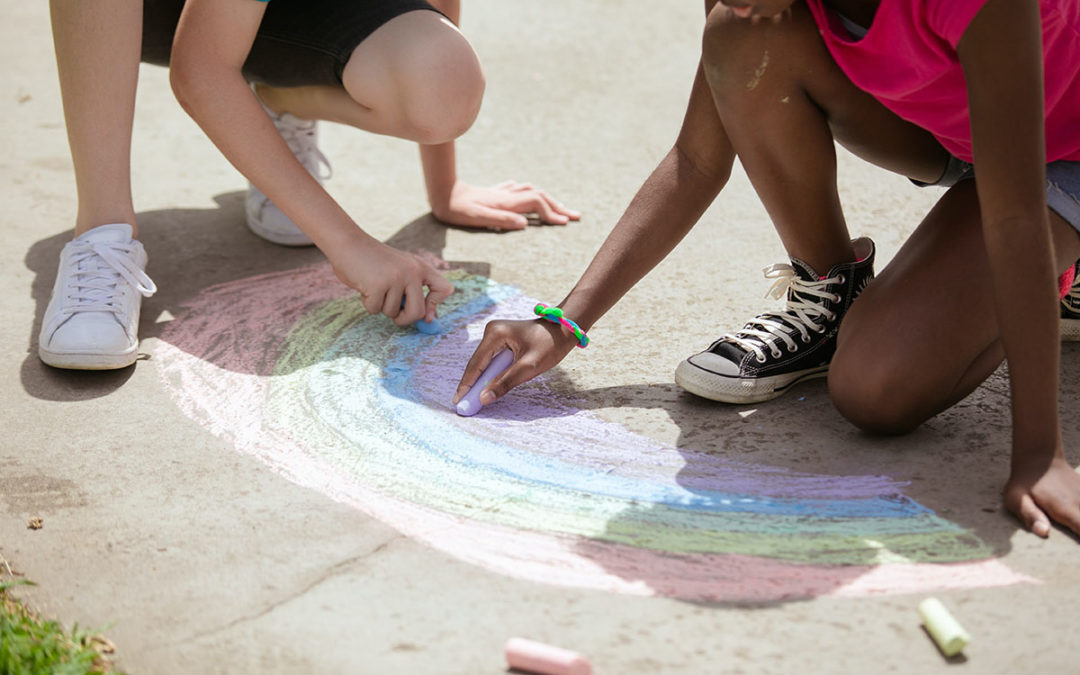A lot goes into learning how to handwrite. While four-year-olds shouldn’t be expected to know how to make their letters or write well, they should be working on prewriting skills so that they are ready to learn how to handwrite when the time comes.
Play & Creative Activities That Build Pre-Writing Skills
Here are some activities to help a four year old develop the skills that they will need to handwrite well:
To improve pencil grip:
- Draw or color with small pencils or broken crayons
- Paint with Q-tips or wooden craft sticks
- String beads on a pipe cleaner
- Rip or tear paper (like tissue paper, construction paper or newspaper) and then glue it onto card stock to make a colorful collage
To improve fine motor skills:
- Open-ended play with play dough or kinetic sand
- Color with chalk on sand paper or on the sidewalk
- Building and stacking with small blocks
- Snipping and cutting with child safe scissors
To improve bilateral coordination (using the two hands together):
- Scooping and pouring water or sand at a sensory table
- Playing catch
- Building and constructing with magnetic tiles, legos, and blocks
To improve eye hand coordination:
- Throw a bean bag or soft ball at a target
- Corn hole
- Bouncing a ball
- Treading and lacing following a pattern
- Completing puzzles
To improve Visual Perception Skills:
- I spy Games
- Beading and lacing
- Connect the dot activities
- Completing mazes
- Matching and sorting activities
- Look and find books
Practicing Pre-Writing Skills with Letter Leaders
The first book in the Letter Leaders series of workbooks, Prewriting, will help 4 year olds learn the necessary skills they will need to learn how to form letters correctly. This workbook teaches children the correct way to write and form letters by helping them recognize where a letter starts and stops (directional concepts), what a particular letter looks like based on its lines (line identification), and how to form the letter correctly (line formation).
The following prewriting skills are taught in this workbook:
- Directional Concepts Top, Bottom, and Middle
- Line Identification
- Vertical Line Formation
- Horizontal Line Formation
5 Minutes a Day
In as little as five minutes a day, children can improve the skills listed above so they will be ready to form each of the letters of the alphabet correctly. Along with intact eye-hand coordination and perceptual skills, strong fine motor skills, a good pencil grasp, and bilateral coordination are all necessary to learn how to handwrite well.
Using the Letter Leaders learn to handwrite program will also help. Here are some key features of the program:
- Full-color, easy-to-follow step-by-step instructions throughout the program
- A multisensory approach to accommodate all types of learners
- A developmental progression that first teaches prewriting skills, then correct capital letter formation, and finally correct lower-case letter formation
- Engaging full-color pages that motivate and promote success
- Consistent terminology and structure throughout the program, appropriate for young learners and elementary-aged children learning how to write
- A format that can be used to teach children one-on-one, in small groups, or in a full classroom setting
Click here to learn more about the Letter Leaders Handwriting Workbook series.


Recent Comments